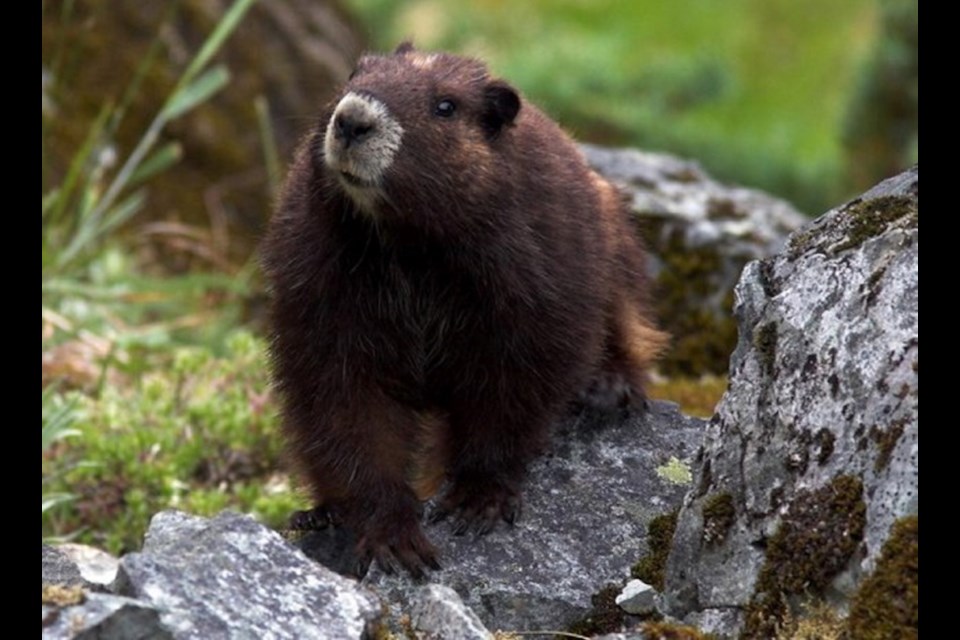Research by a Vancouver Island University graduate says captive breeding programs used to increase the population of the Vancouver Island marmot have preserved a level of genetic diversity that is helping the endangered species climb back from extinction.
Kimberley Barrett was the lead author of a research paper recently published in Conservation Genetics, saying there’s been no loss of diversity since the start of the captive breeding program and there is no difference in the genetics between the wild and captive populations.
Diversity is being preserved equally among both groups, said the paper. The project involved sequencing DNA from marmot hair samples supplied by the Vancouver Island Marmot Recovery Foundation.
The Vancouver Island marmot is Canada’s most endangered mammal. A captive breeding program was started in the late 1990s at Mount Washington and continues there, as well as at the Calgary and Toronto zoos, to help prevent extinction.
With such a small population, conservationists have been concerned about the genetic diversity of the species, which helps it to survive threats such as disease outbreaks or adapt to climate change.
“With captive breeding, one of the foremost concerns on the mind of conservationists is genetic diversity, because if that happens, we can see a lot of negative ramifications for that species, especially long-term,” said Barrett.
She said Vancouver Island marmots already have a low level of genetic diversity because they are only found on the Island and their numbers had previously declined to the brink of extinction, hitting a low point of fewer than 30 animals in 2003.
Since then, massive recovery efforts — including breeding programs, a dedicated recovery centre, supplemental feedings for breeding females and habitat protection — have helped to slowly rebuild populations on the Island’s alpine meadows and slopes.
In 2013, the population hit a high of 346, but weather and predators, among other factors, took a huge toll. The following year, 266 animals were counted, but the population dipped again. In 2020, the count was 200.
The Vancouver Island Marmot Recovery Foundation said about 250 marmots were counted in the wild in 2021, mainly in large colony groups around Mount Washington, Strathcona Park and the Nanaimo Lakes regions.
About 530 captive-born pups have been released in the wild since the captive breeding program started. However, the mortality rate of the marmots remains high.
Jamie Gorrell, a Vancouver Island University biology professor and Barrett’s VIU research supervisor, said if a species loses genetic diversity, it may find it harder to cope with threats later on.
“There’s the risk that low diversity means you may not be able to survive new threats like disease and even if you can survive now, you may not be able to adapt tomorrow,” said Gorrell. “Climate change is a big one. We don’t necessarily know how marmots are going to respond to it. Temperatures are getting more variable and the consistency year-to-year is getting less reliable. We expect it’s going to be harder for marmots to cope with that in the future.”
Gorrell said DNA from marmots was analyzed and found to have the same amount of diversity as those in the 1990s — before the population reached its lowest point and before captive-bred marmots started being released back into the wild to augment the population. “We see this as a good news ongoing success story that management actions are going as planned.”
Barrett graduated from VIU with a bachelor of science in biology in 2019 and is pursuing her master’s degree at the University of Alberta.
The research paper has eight co-authors, including VIU alumni Genevieve Amaral and Melanie Elphinstone, who conducted some of the research while they studied at VIU.
dkloster@timescolonist.com
To comment on this article, write a letter to the editor: letters@timescolonist.com



